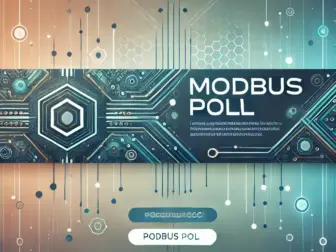Tag - IoT Protocol
Blog , June 27, 2024 , IoT Debugging, IoT Protocol, Modbus, Modbus Poll
Blog , January 6, 2024 , IoT Protocol, IoT technology, Matter, Matter1.2, smart Home, Wireless Communication Protocols
Exploring the Intricacies and Applications of IoT Protocols in Modern Technology
Exploring the Intricacies and Applications of IoT Protocols in Modern Technology
The world of the Internet of Things (IoT) is a rapidly evolving landscape where billions of devices communicate and interact with each other to make our lives easier, safer, and more efficient. At the heart of this interconnected web is a suite of specialized IoT protocols, designed to cater to the unique requirements of IoT devices and applications. These protocols are critical for ensuring reliable data transfer, security, and interoperability among the myriad of devices that make up the IoT ecosystem.
IoT protocols are essentially the rules and structures that govern how data is transmitted across a network of interconnected devices. They ensure that devices can understand and interpret the data they receive, regardless of the manufacturer or the nature of the device. This interoperability is crucial in creating cohesive IoT systems that can work seamlessly across various platforms and scales.
One of the primary considerations in IoT protocol design is the resource constraint inherent to many IoT devices. IoT devices can range from powerful industrial machinery to small sensors running on battery power. As such, IoT protocols must be efficient in terms of power consumption and bandwidth usage to accommodate the limitations of smaller, less powerful devices.
The Message Queue Telemetry Transport (MQTT) protocol is one such protocol designed for lightweight messaging. It is a publish/subscribe-based messaging protocol that works well in high-latency and unreliable networks. MQTT is particularly favored in home automation systems and for applications requiring minimal code footprints on devices.
Constrained Application Protocol (CoAP) is another protocol optimized for resource-constrained devices. It operates over UDP (User Datagram Protocol) and is designed for simple, low-power nodes within constrained networks, providing a method for them to communicate interactively with the rest of the Internet.
For devices that need to transfer large amounts of data or stream multimedia, protocols like Advanced Message Queuing Protocol (AMQP) or Data Distribution Service (DDS) may be more appropriate. These are designed for more complex messaging needs and ensure secure, reliable, and high-performance data distribution.
Security is another vital aspect of IoT protocols. With the proliferation of IoT devices, the attack surface for potential security threats increases. Protocols such as Transport Layer Security (TLS) and Datagram Transport Layer Security (DTLS) provide encryption for IoT communications, ensuring that data remains confidential and tamper-proof during transmission.
In addition to data transfer protocols, IoT devices also rely on discovery and management protocols. Lightweight Machine-to-Machine (LwM2M) is a protocol that provides device management and service enablement for IoT devices. It allows remote management of IoT devices, including configuration, monitoring, and firmware updates, all crucial for maintaining the health and security of IoT systems.
The choice of protocol can significantly affect the performance, scalability, and security of an IoT system. As IoT technology continues to evolve, it’s foreseeable that existing protocols will be refined and new protocols developed to address emerging challenges and use cases.
In conclusion, IoT protocols are the linchpins that enable the vast IoT universe to function harmoniously. They are tailored to meet the diverse requirements of IoT devices, from the most constrained sensors to the most demanding industrial applications. As the IoT landscape grows, the development and adoption of robust, secure, and efficient IoT protocols will remain pivotal to the realization of a truly interconnected world where everything works together as part of a larger, smarter system.

